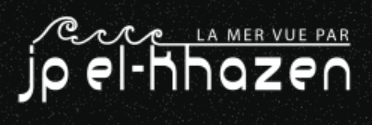By Malek el Khazen – edited text by OpenAI

The pursuit of Artificial General Intelligence (AGI) demands a paradigm shift in how AI systems are trained and deployed. Simply adding more hardware to handle increasing computational demands has reached a point of diminishing returns. The next breakthrough will come from a unified platform that integrates software and hardware optimization, creating an end-to-end solution for building, maintaining, and enhancing AI models. This platform will go beyond piecemeal tools, becoming the foundational ecosystem to propel AGI development.
Robots: Not the Unicorn, But a Piecemeal Approach
The road to AGI will not be paved with more hardware but with smarter, more integrated solutions. While robots often dominate AGI hype, they currently represent a piecemeal approach rather than a comprehensive solution. Robots are extensively deployed in production for specific tasks, from drones revolutionizing logistics and surveillance, to robots optimizing manufacturing lines, and automating repetitive industrial tasks. These applications showcase their potential to transform industries. However, the leap to AGI requires a broader perspective—not merely focusing on task-specific automation but on building cognitive capabilities that enable machines to reason, adapt, and interact across diverse scenarios.
Robotics, despite its successes, faces significant challenges. Hardware limitations and agility constraints often hinder the ability of robots to perform beyond their predefined roles. Scaling this task-specific functionality into the realm of AGI will demand solutions that address both the cognitive and physical limitations inherent in robotics. Yet, the current success of robotics underscores the potential for synergy when AGI is integrated, allowing robots to transcend their current utility and evolve into general-purpose problem-solvers.
To achieve this, the next platform must bridge the gaps in robotics by fostering cognitive complexity while enhancing agility and efficiency. This unified ecosystem will empower robots to operate seamlessly in dynamic, unstructured environments, enabling true collaboration between AGI and robotics. By shifting from isolated tools to integrated systems, we can create the infrastructure needed to unlock AGI’s transformative potential and redefine the boundaries of what robots can achieve.
Hardware Challenges and the Limits of Scaling
Current advancements in hardware, such as NVIDIA’s GB200 GPUs, have improved performance by introducing features such as FP4 support, refined interconnect technologies, and efficient GPU-to-CPU configurations. While these innovations have tripled performance in some cases, they are hitting physical environmental and economic ceilings. Scaling hardware further is constrained by costs, energy consumption, and manufacturing complexities. Even Nvidia went one step further by integrating Run AI and Octo AI to optimize resources for AI workloads by providing dynamic resource allocation, automate deployment, workload orchestration, and efficient GPU sharing across teams and projects. The solution lies not in adding more silicon but in transforming the way AI models are trained and optimized, focusing on efficiency, quality, and adaptability
Quantization: Efficiency Without Compromise
Quantization is a critical innovation that enables AI models to perform efficiently without sacrificing accuracy. By reducing the precision of numerical representations, such as lowering from 32-bit to 8-bit or even 4-bit values, quantization reduces memory and computational demands. Techniques such as QLoRA push this further, compressing models to 4-bit while introducing mechanisms to retain accuracy. This not only decreases infrastructure costs but also democratizes access to powerful AI by enabling deployment on consumer-grade hardware. The next platform must make quantization accessible and automated, incorporating advanced features such as Sparse-Quantized Representations (SpQR), which prioritize high-precision calculations for critical parameters while compressing less impactful ones.
Liquid Neural Networks: Continuous Adaptation
Unlike traditional models with fixed parameters post-training, Liquid Neural Networks (LNNs) from LiquidAI as an example continuously adapt to new data through dynamic weight adjustments. This flexibility enables real-time learning and resilience against unexpected inputs, making LNNs ideal for dynamic environments such as predictive maintenance or financial forecasting. LNNs consume less energy and computational resources compared to transformer models, while offering explainability—an essential feature for industries requiring high transparency, such as healthcare or autonomous systems. A unicorn platform must integrate this adaptive capability, creating a system that learns on the fly and remains relevant as data evolves.
The Power of Tiny Data and High-Quality Training
The idea that more data equates to better models is being challenged. The success of TinyStories from Microsoft Phi models highlights the value of smaller, high-quality datasets tailored to specific use cases. Researchers demonstrated that a curated dataset of concise stories could train small language models to achieve exceptional fluency and grammar, proving that precision can outperform sheer volume. This shift is critical as industries face the growing costs and inefficiencies of relying on noisy, unfiltered web-scale datasets. The next-generation platform must automate the creation and curation of targeted datasets, ensuring models are trained on data that maximizes relevance and minimizes redundancy.
Bridging Multi-Modality
AI models today often excel in narrow applications but struggle with multi-modal tasks that require synthesizing text, images, and video data. A true end-to-end platform must bridge these modalities, enabling seamless integration and retrieval of diverse data types. Advances in vector embeddings have made it possible to represent all modalities in a unified framework, allowing efficient search and retrieval across text, multimedia, and structured data. A unicorn platform must embed multi-modal capabilities at its core, not as an afterthought, ensuring it meets the diverse needs of industries ranging from entertainment to healthcare.
Automating and Orchestrating the AI Lifecycle
Many companies today focus on isolated components of AI, providing tools for either training, deployment, or optimization. This fragmented approach mirrors productivity ecosystems before the advent of comprehensive solutions such as Microsoft 365. An end-to-end AI platform must orchestrate the entire lifecycle including agentic approach, evaluation, metrics (Microsoft AI Foundry) it is important to take this as an example and include automating training, quantization, fine-tuning, and deployment. By integrating these capabilities, the platform would enable organizations to focus on innovation and reaching to at least a model that can differentiate between cognitive (Human senses, emotions etc.) as much as reasoning and this will require a combination of agentic approach, hardware optimization and automating data labeling through RLAIF including continuous learning.
Reinventing Model Training with Smart Approaches
Traditional model training often relies on brute-force computations and costly cloud infrastructure. Smart training approaches, such as reinforcement learning from human feedback (RLHF) or AI feedback (RLAIF), introduce a more efficient paradigm. These methods refine models by focusing on user preferences or task-specific objectives, creating adaptive systems that learn in context. Combining these techniques with quantization and LNNs can make the training process more cost-effective while maintaining high performance.
Addressing the Ethical and Environmental Imperative
The rise of AGI must also address ethical and environmental challenges. The next platform must include built-in capabilities for unlearning sensitive or private data and minimizing the environmental impact of large-scale models. Techniques such as 1-bit LLMs and advanced quantization reduce energy consumption, while regulatory compliance tools ensure alignment with global privacy standards. These features are not optional but essential to gaining trust and meeting the growing demand for responsible AI. Human can understand what is ok and what is NOT ok. We need to get AI to this point. We just started identifying the tool on how to get there. Now let us make it happen!
A Collaborative Ecosystem for AGI
The next unicorn platform will succeed by fostering collaboration. It must empower cross-functional teams—including data scientists, engineers, and business leaders—by providing low-code interfaces and modular architectures. This ecosystem would support seamless integration with existing tools while offering advanced capabilities for AI optimization. Through this approach, the platform will become the foundational layer driving AGI innovation, making advanced AI accessible and efficient for all.
The Future is Unified
The road to AGI will not be paved with more hardware but with smarter, more integrated solutions. The next unicorn platform will redefine the AI landscape by combining quantization, adaptive learning, high-quality data curation, and end-to-end orchestration. It will become the backbone of AI development, not by focusing on isolated components but by uniting them into a cohesive, transformative system. This is the platform that will unlock the full potential of AI and bring us closer to the ultimate goal of AGI.
This is what I am expecting for FY25, FY26 and beyond – a New Unicorn incorporating an end to end solution.
Comments
Add a comment…
Open Emoji Keyboard
No comments, yet.
Be the first to comment.Start the conversation



